A tire pressure monitoring system (TPMS) is an electronic system designed to monitor the air pressure inside the pneumatic tires on various types of vehicles. TPMS monitors the actual air pressure inside each tire via a sensor mounted within the tire behind the air valve. TPMS report real-time tire-pressure information to the driver of the vehicle, either via a gauge, a pictogram display, or a simple low-pressure warning light (which is to represent a flattened tire with exclamation point).
These systems were created for the luxury lines, with the first passenger vehicle to adopt it was the Porsche 959 in 1986. Since then, the system has proven that it can help you avoid traffic accidents due to under-inflated tires by early recognition of the malfunction of tires. It also increases overall fuel efficiency.
Do you remember the Firestone recall from the late 1990s? More than 100 automotive fatalities were attributed to Firestone tires that lost their tread when they were run underinflated, and friction heated them beyond their capability to handle. The tires blew out or delaminated, and this led to the rollover of the vehicles they were on. This pushed the Clinton administration to legislate the TREAD Act. The Act mandated the use of a suitable TPMS technology in all light motor vehicles (under 10,000 pounds), to help alert drivers of severe under-inflation events. In 2012, the National Highway Safety Administration (NHTSA) through the Motor Vehicle Safety Act has made it illegal for an automobile repair facility to knowingly not re-install a functioning TPMS system if vehicle arrived at facility with functioning TPMS system. Basically, if a vehicle came into your shop with working a TPMS, it must leave the show with a working TPMS.
There are special considerations to be made when changing tires equipped with a TPMS sensor. If done incorrectly, a sensor can be broken and that will only add to your customer’s frustration and your shop’s cost. Only trained tire maintenance professionals should handle tires with this system.
Posted on Author eagleequipCategories Tire ChangersTags Eagle Equipment, etc-550, firestone recall, low-pressure warning, Motor Vehicle Safety Act, National Highway Safety Administration, NHTSA, Tire Changer, tire maintenance professionals, tire pressure, tire pressure monitoring system, tpms, TPMS Sensor, TPMS technology, tread act, youtube, zach hubbardWatch Eagle Equipment’s short video on how-to remove and install tires from the rim without damaging the TPMS sensor.
Over the last decade, the introduction of tire pressure monitoring systems (TPMS) has revolutionized the way motorists, shops and manufacturers approach tire maintenance. The system provides a great safety benefit to motorists by alerting them of underinflated tires. Low tire pressure may lead to a blowout and vehicle crash. Improper installation or maintenance of TPMS sensors can create challenges for technicians and shops.
The system provides a great safety benefit to motorists by alerting them of underinflated tires. Low tire pressure may lead to a blowout and vehicle crash. Improper installation or maintenance of TPMS sensors can create challenges for technicians and shops.
A dashboard TPMS warning light on a vehicle could be signaling one or multiple issues such as a dead or dying sensor battery, a system’s inability to communicate with all vehicle sensors or low pressure in one or more tires. Following the TREAD act, all vehicles model year 2008 and newer are required to be equipped with TPMS, which increases vehicle safety by monitoring tire pressure and communicating this information to the driver.
The first cycle of vehicles affected by the TREAD act, which includes the roughly 6.8 million new vehicles sold in the United States in 2008, are prime candidates for TPMS service as their sensors are beginning to reach the end of their 7-10 year life expectancy. With millions of vehicles expected to need TPMS sensor replacement, it’s important to know what is involved with the replacement, installation and relearn of TPMS sensors.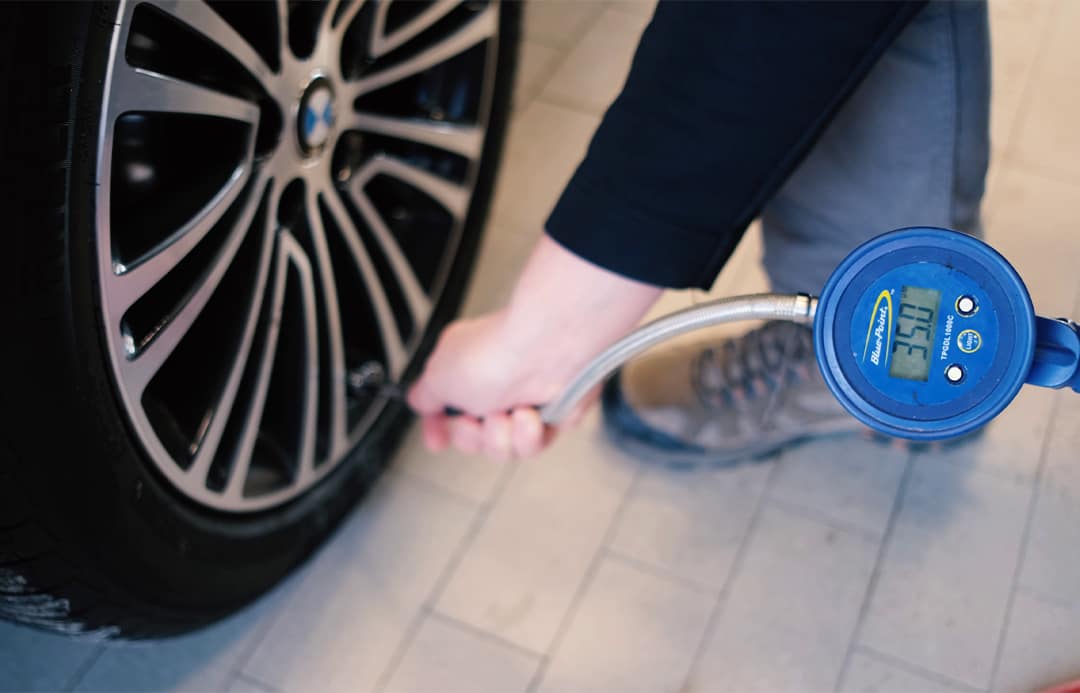
When investigating the cause of the TPMS warning light, start with a visual inspection. How old is the vehicle? Do the tires look low or flat? Is there physical damage on the sidewall, tread or rim?
Once you find the issue, it can be fixed. A tire may need air, repair or replacement, a rim may be damaged and need replacing or a sensor may be damaged or dead. Each time a tire is replaced or moved to a different position on the vehicle, or when installing new TPMS sensors, you may need to reprogram the system.
When replacing or recalibrating the sensors, manufacturers have created specific steps to put the vehicle in learn mode and program sensors. Some vehicles may relearn sensors automatically when tires are rotated. However, most TPMS sensors will require an action by you to relearn or reprogram them. To save time, a standalone or paired TPMS tool can be used to reset and relearn sensors quickly. Some tools will walk you through the relearn process. This includes putting the system in learn mode and reading each sensor. Some diagnostic scan tools will also include relearn procedures.
This includes putting the system in learn mode and reading each sensor. Some diagnostic scan tools will also include relearn procedures.
Your customer may see the TPMS dashboard light as an annoyance, but you can educate them on the importance of proper and improper TPMS maintenance.
The major benefits of TPMS maintenance are extended tire life and safety. The system ultimately saves time and money by helping maintain proper tire pressure for even wear, better fuel economy and extended tire life.
A broken TPMS may also lead to lower fuel economy. With properly maintained and inflated tires, your customers can get better gas mileage and spend less at the pump.
As mentioned above, improper inflation can have a catastrophic impact on vehicle safety, including tire breakdown and failure. Properly inflated tires can mean the difference between safe driving and a higher risk for accidents.
In comparison to other systems in today’s vehicles, TPMS is relatively straightforward. However, don’t overlook two factors in TPMS service – the spare tire and location of the sensor within each tire.
However, don’t overlook two factors in TPMS service – the spare tire and location of the sensor within each tire.
A spare tire typically remains forgotten, mounted to the frame or in the trunk, but for some TPMS systems, it’s a crucial factor in recalibration. If you don’t activate the sensor in the spare tire, the system will give a false read. Alternatively, an active sensor in the spare tire will be recognized by the vehicle, so it may be the source of the warning light as well. Always check the spare tire when servicing TPMS.
When changing a tire, you risk damaging a TPMS sensor. The highest danger is when you’re breaking the bead and removing the old tire, particularly when breaking the bead using a tool such as a pry bar. Use care when prying around the valve stem, where most modern-day sensors will be located.
“Don’t overlook two factors in TPMS service – the spare tire and location of the sensor within each tire.”If a customer is simply looking for you to turn off their TPMS light without fixing the underlying cause, this type of situation can create unnecessary liability for you and your shop. If you turn off the light without fixing the issue, you are violating the NHTSA’s “make inoperative” provision, which then leaves shops legally responsible for disabling the TPMS. It is your responsibility to explain this to your customer, and to refuse service if they decline to have the issue properly fixed.
If you turn off the light without fixing the issue, you are violating the NHTSA’s “make inoperative” provision, which then leaves shops legally responsible for disabling the TPMS. It is your responsibility to explain this to your customer, and to refuse service if they decline to have the issue properly fixed.
If a single sensor has reached the end of its lifespan, it is highly recommended to replace all sensors at the same time. Similar to headlights, once one sensor dies, the rest are likely to be close behind. The same is true for a corroded valve stem or other non-impact sensor replacement. This is an important point for your customers to understand and can help you provide the best service for their vehicle. It also is a convenience to them.
For any motorists that swap their tires out for changing seasons, it’s crucial that the TPMS sensors are reactivated and recalibrated each time. If this is not done, the vehicle’s TPMS will not perform properly and may cause the TPMS light to turn on.
TPMS is not going away. If you haven’t had to replace or relearn sensors before, you will in the future. A dedicated TPMS tool will help you and your shop from turning business away and allowing you to relearn and reprogram sensors faster.
Look for a tool with built-in reprogramming features so you’ll have all the information needed to complete the job quickly. One with an OBDII dongle can even put the vehicle into learn mode and wirelessly scan and relearn new sensors. Other tools can pair with your OTC diagnostic tools to relearn new sensors or work as a standalone tool. The right equipment can make the difference.
OTC 3834tTPMS equipment is a useful option that is equipped with modern cars. TPMS monitors the tire pressure and signals the change in the parameter to the on-board computer.
If such equipment is installed on your car, this is not an obstacle to fast and high-quality tire fitting. But it is difficult to cope with this task on your own, since the use of specialized equipment is required. To the question of how to tire with pressure sensors, the answer is simple - visit Tuningberg LLC, where experienced craftsmen will perform the work in the shortest possible time. Our mechanics visually determine the presence of control equipment, but it is safer to warn about the gadget in advance, since the sensors are very fragile and prone to breakage. nine0005
But it is difficult to cope with this task on your own, since the use of specialized equipment is required. To the question of how to tire with pressure sensors, the answer is simple - visit Tuningberg LLC, where experienced craftsmen will perform the work in the shortest possible time. Our mechanics visually determine the presence of control equipment, but it is safer to warn about the gadget in advance, since the sensors are very fragile and prone to breakage. nine0005
Control and measuring devices are made of two types: external and internal.
 nine0014
nine0014 When replacing wheels, increased accuracy is required, which will be provided by our masters.
The installed pressure sensor is not a serious obstacle, but requires precautions when mounting or dismantling the rubber.
During the process, it is unacceptable to apply external influence to the device. From the description it is clear that it is impossible to carry out work without having the skills and without the use of specialized equipment.
From the description it is clear that it is impossible to carry out work without having the skills and without the use of specialized equipment.
If your car is equipped with such equipment, be sure to contact a car service to reinstall seasonal tires. The question arises whether it is possible to install devices on both sets of wheels and replace them yourself. No, it causes difficulties. nine0005
After installing the wheels, the computer does not perceive the signal, and this is normal, since the cars standing nearby will transmit information that does not correspond to reality, therefore, recoding of the control equipment is required. This operation is carried out quickly: nine0005
This operation is carried out quickly: nine0005
After that, the circuit returns to normal and functions properly.
Our company employs qualified mechanics with extensive experience in tire fitting of wheels equipped with pressure sensors. They use modern high-tech equipment and follow the recommended work steps exactly. As a result, our customers are protected from marriage and breakdowns. nine0005
Independent work can lead to malfunctions of complex equipment, the elimination of which will require time and additional costs.
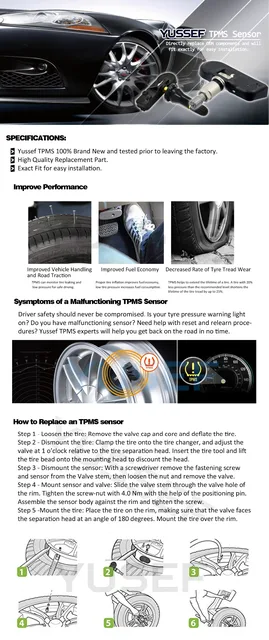 nine0014
nine0014 Call and come. The employees of Tuningberg Ltd. are ready to cope with the most difficult problem. Our company is a reliable and responsible partner.
array ( [ID] => 59[~ID] => 59 [IBLOCK_ID] => 6 [~IBLOCK_ID] => 6 [NAME] => How to tire change tires with pressure sensors [~NAME] => How to tire change tires with pressure sensors [PREVIEW_TEXT] =>
Installed tire pressure sensors can complicate self-mounting tires, as the whole procedure for changing tires will change a little. In this article, you will learn how professionals carry out tire fitting of wheels with pressure sensors and what nuances you should pay attention to. And also why it is better to turn to professionals, and not try to do it yourself.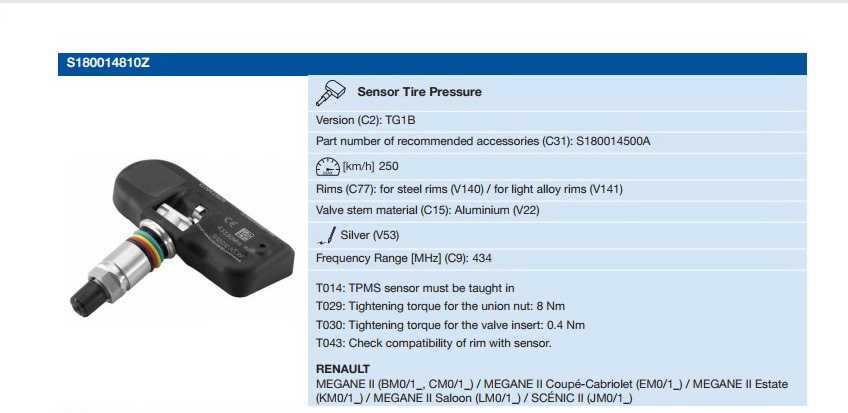 nine0005
nine0005
[~PREVIEW_TEXT] =>
Installed tire pressure sensors can complicate self-mounting tires, as the whole procedure for changing tires will change a little. In this article, you will learn how professionals carry out tire fitting of wheels with pressure sensors and what nuances you should pay attention to. And also why it is better to turn to professionals, and not try to do it yourself.
[PREVIEW_PICTURE] => 604 [~PREVIEW_PICTURE] => 604 [DATE_CREATE] => 19.10.2020 18:50:49 [~DATE_CREATE] => 10/19/2020 18:50:49 [DATE_ACTIVE_FROM] => 01/08/2021 19:37:00 [~DATE_ACTIVE_FROM] => 01/08/2021 19:37:00 [PREVIEW_TEXT_TYPE] => html [~PREVIEW_TEXT_TYPE] => html )
24.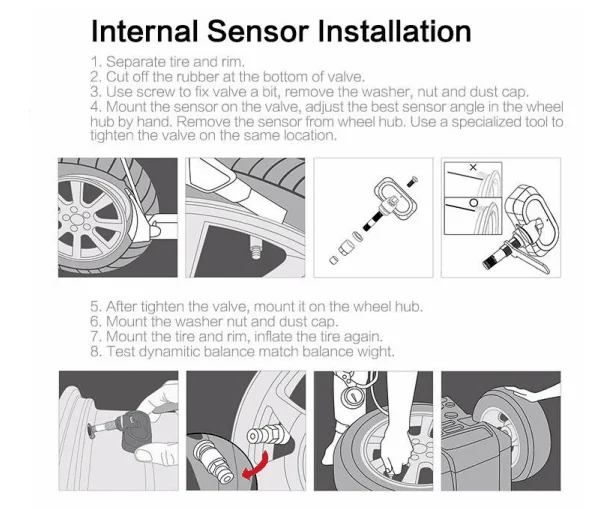 08.2009, 21:43 #41
08.2009, 21:43 #41
Posted by Gavriil
Guys, how can I turn off this ill-fated flashing signal on the dashboard after changing tires and wheels that do not have pressure sensors ?? nine0005 A friend recently got a pillow error (like mine), while there was already a pressure sensor error, after resetting the pillow error (there are relevant topics), the sensor error also disappeared. Nissan says that the car has a winter mode, i.e. a consultant can put the system into winter mode, and it will forget about the sensors.
---------- Post added at 20:43 ---------- Previous post added at 20:42 ----------
PS Looks like back system can only be returned by a consultant, because restarting the airbag diagnostics did not activate the tire pressure monitoring system. Engine diagnostics also did not lead to activation of the system. Question: does anyone know how to activate it without a consultant? nine0081
24. 08.2009, 23:44 #42
08.2009, 23:44 #42
Posted by Green
When I changed tires, the master pointed out the curvature of the disks. I think I need to roll them, but there is a problem - a pressure sensor. When rolling, the disk will heat up, which will be very bad for the sensor)) I went to the dealer’s office, they said that the sensor can be easily removed and put back, they offered to rent it from them, but for this I would have to get winter tires, change shoes, go to them, remove sensors, then go to the tire shop and roll it - a hassle in a word. Long prelude and actually the question is: Has anyone removed these sensors on their own and can write how, or can they throw a manual? Thanks in advance!
Time has passed...
Arrows from #1 point to the place where the cap is screwed on. Arrows No. 2 indicate the place where a special long nut is screwed to fix the sensor on the disk, while the first white stripe (looking from top to bottom) looks at the axle (perpendicular to the wheel axle).Between the first white stripe and the thread under arrows No. 2 there is a sealing (black) ring, it is advisable to lubricate it with sealant before installation (IMHO) THINLY!!! nine0081
Last edited by scor; 08/24/2009 at 23:50.
31.08.2009, 21:41 #43
Posted by Nitro
My car sat for a week with the battery disconnected...
Consultant at office. dealer
Bottom line - now does not show information about tire pressure (does not show at all - immediately jumps to the maintenance screen). The light on the panel is also off...
It doesn't really bother me, but maybe someone knows how to activate this function again?
21.03.2010, 23:02 #44 nine0005
There are a couple of questions on this topic.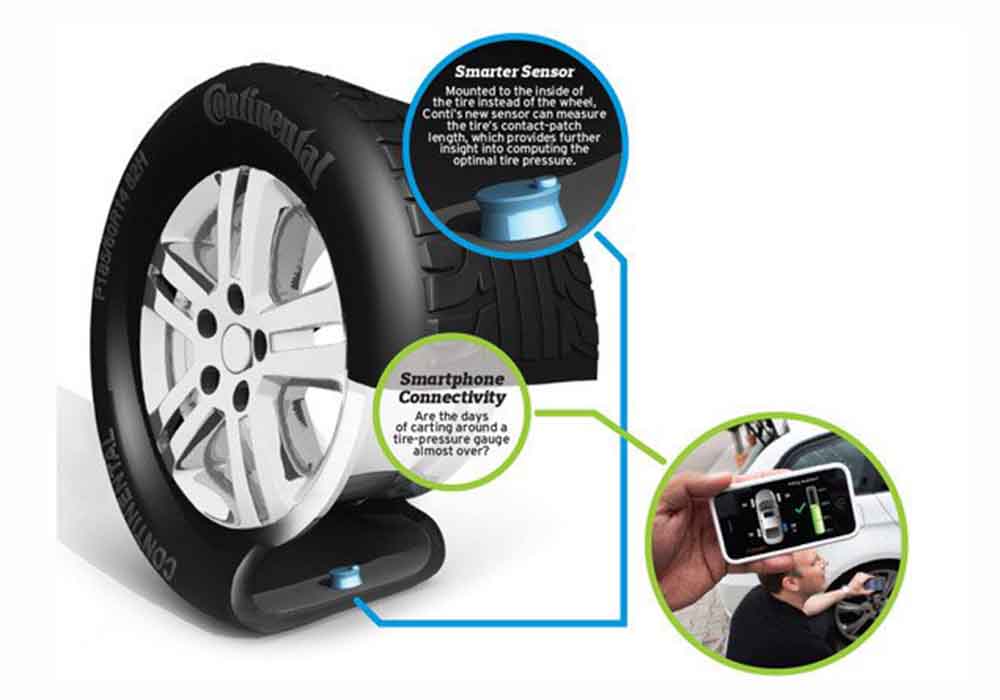
Changed tires and rims today from winter to summer.
The winter rims did not have tire pressure sensors and the light on the instrument panel was constantly on and there was a message on the display.
I put summer wheels with sensors, but the light on the panel did not go out and the tire pressure readings did not appear on the display.
What could be the problem? Where to start? Are the sensors collapsible and are there batteries? nine0116 This was not the case in previous years. As soon as I put summer wheels on, tire pressure readings immediately appeared. ???
04/05/2010, 16:24 #45
Same problem
I read that there are batteries in each nipple and communication via bluetooth.
Maybe you need to ride more to get them charged? nine0116 Or reboot the computer?---------- Message added at 15:24 ---------- Previous message added Yesterday at 21:19 ----------
Everything worked for me .Just drove for a couple of hours.
The batteries are charged.
26.05.2010, 14:19 #46
warning Type pressure writes, tire pressure is not good, who knows how to remove this inscription. thanks in advance.
07/15/2010, 20:25 #47
I'm going to buy a second set of wheels with pressure sensors.
Has anyone been able to program the new kit? nine0081
31.08.2010, 14:42 #48
What's the problem then? Here I found it for you - Pressure sensor TPMS 433MHz \ 085-4123-80D \, other models are in the same place. Order through the online store. Or leave a request.
People, seriously, do we have sensors inside the wheel in P12? I have never disassembled summer tires just .